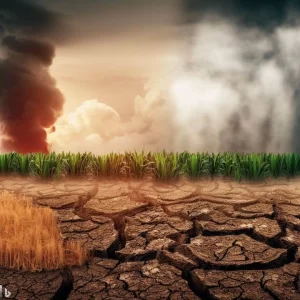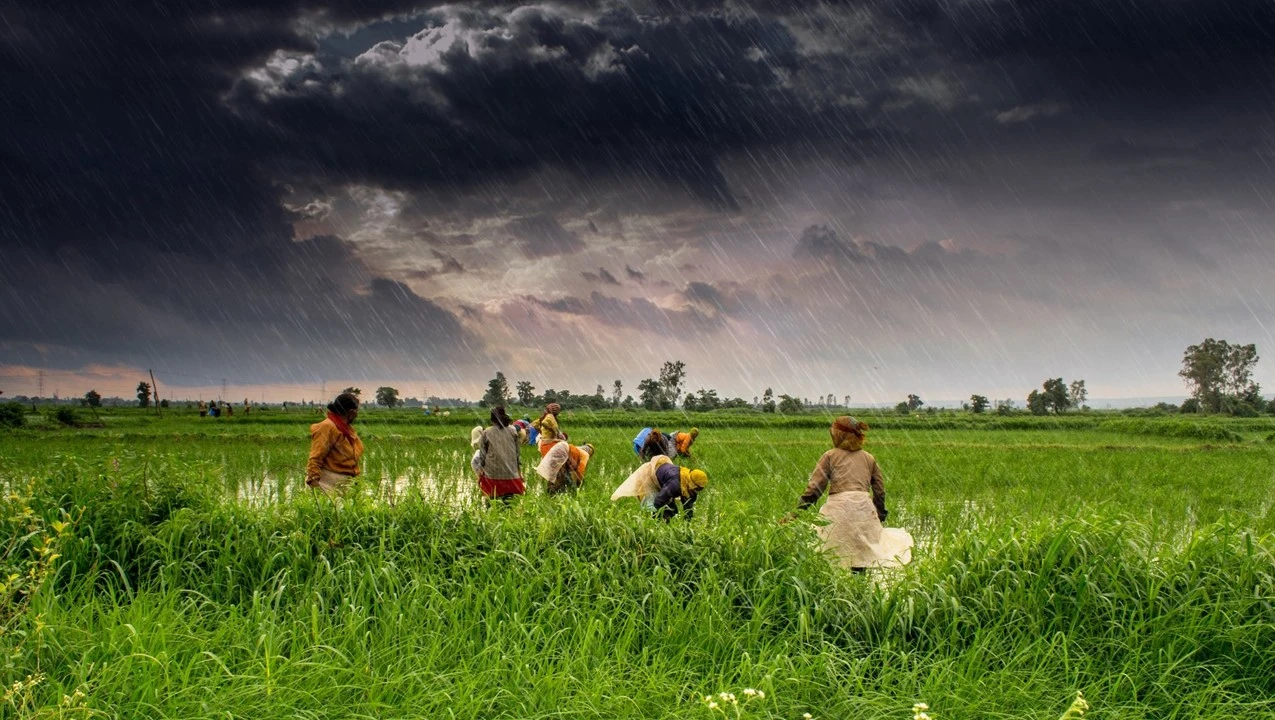Introduction
Climate change is a global phenomenon that affects various aspects of life, and agriculture is one of the most vulnerable sectors. In India, where agriculture plays a crucial role in the economy and sustenance of its vast population, the impact of climate change is particularly significant. This blog explores the ways in which climate change is affecting agriculture in India and the steps being taken to mitigate these effects.
The Agricultural Landscape in India
Agriculture is the backbone of the Indian economy, employing nearly half of the workforce and contributing around 15% to the GDP. The sector is diverse, with a wide range of crops grown across different climatic zones, from the fertile plains of Punjab to the arid regions of Rajasthan. The major crops include rice, wheat, pulses, sugarcane, and various fruits and vegetables. The country’s agriculture is heavily dependent on the monsoon rains, making it highly susceptible to changes in weather patterns.
Impact of Climate Change on Agriculture
1. Changing Rainfall Patterns
One of the most noticeable impacts of climate change is the alteration in rainfall patterns. The Indian monsoon, which is vital for the agricultural cycle, has become increasingly erratic. Some regions experience prolonged droughts, while others face intense and unpredictable rainfall, leading to floods. These changes disrupt the sowing and harvesting cycles, affecting crop yields and food security.
2. Rising Temperatures
Increasing temperatures are another significant concern. Higher temperatures can lead to heat stress in crops, reducing their growth and productivity. For example, wheat, a staple crop in northern India, is highly sensitive to temperature changes, and even a slight increase can result in substantial yield losses.
3. Water Scarcity
Climate change exacerbates water scarcity, a critical issue in many parts of India. Reduced rainfall and higher evaporation rates due to rising temperatures deplete water resources, making irrigation more challenging. This is particularly problematic for crops like rice, which require substantial water for cultivation.

4. Pest and Disease Proliferation
Warmer temperatures and changing humidity levels create favorable conditions for pests and diseases. Crops are increasingly vulnerable to infestations and infections, which can devastate entire fields and further reduce yields. Farmers often have to spend more on pesticides and other protective measures, increasing the cost of cultivation.
5. Soil Degradation
Soil health is vital for sustainable agriculture, but climate change contributes to soil degradation through erosion, salinization, and loss of organic matter. Extreme weather events like heavy rains and floods wash away the topsoil, while droughts reduce soil moisture and fertility.
Adaptation and Mitigation Strategies
1. Diversification of Crops
Farmers are encouraged to diversify their crops to reduce dependency on a single crop and mitigate risks associated with climate variability. Growing a mix of crops can help stabilize income and improve soil health.
2. Improved Irrigation Practices
Adopting efficient irrigation methods, such as drip and sprinkler systems, can help conserve water and ensure its optimal use. These technologies reduce water wastage and improve crop yields even in water-scarce regions.
3. Climate-Resilient Crop Varieties
Research and development in agricultural science have led to the creation of climate-resilient crop varieties that can withstand extreme weather conditions. These crops are bred to be more resistant to heat, drought, and pests, ensuring better yields under adverse conditions.
4. Sustainable Farming Practices
Promoting sustainable farming practices, such as conservation tillage, agroforestry, and organic farming, can enhance the resilience of agriculture to climate change. These practices improve soil health, reduce dependency on chemical inputs, and promote biodiversity.

5. Policy Support and Farmer Education
Government policies play a crucial role in supporting farmers to adapt to climate change. Initiatives such as crop insurance schemes, subsidies for climate-resilient technologies, and extension services to educate farmers about best practices are essential. Raising awareness about climate change and its impact on agriculture can empower farmers to take proactive measures.
Conclusion
Climate change poses a significant challenge to agriculture in India, threatening the livelihoods of millions of farmers and the food security of the nation. However, with concerted efforts and adaptive strategies, it is possible to mitigate these impacts and build a resilient agricultural sector. By embracing innovative technologies, sustainable practices, and supportive policies, India can safeguard its agricultural heritage and ensure a prosperous future for its farmers.
How to get started
If you would like to get a climate impact assessment for agriculture done, write to us at enquiry.meepl@gmail.com or contact us
